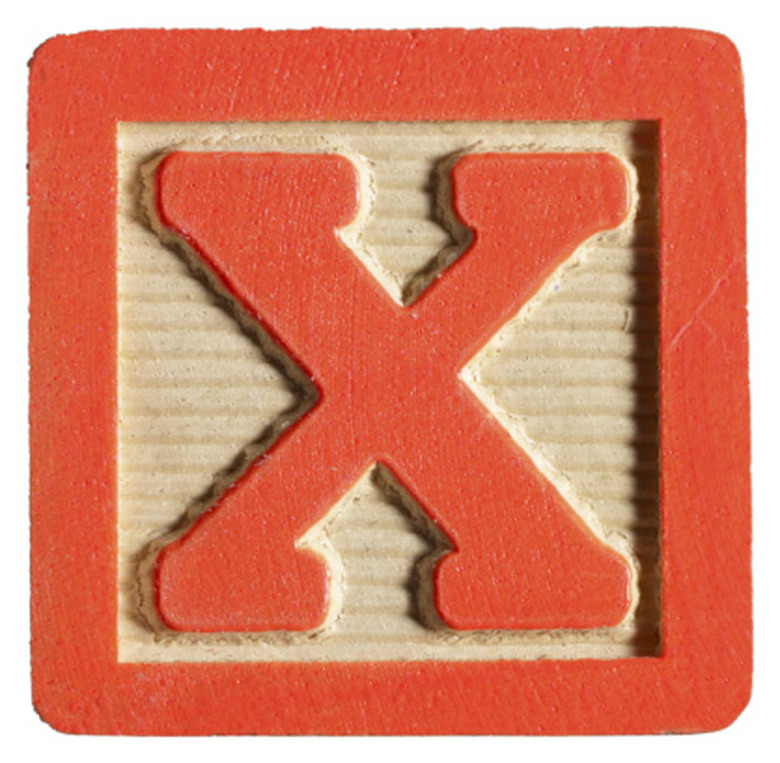How To Solve For X In The Numerator
When matter and antimatter collide, they disappear. When a number and its multiplicative inverse collide, they also disappear. But this is algebra, not particle physics. You can create the multiplicative inverse, or reciprocal, of a number by writing a fraction with the number in the denominator and 1 in the numerator. The multiplicative inverse of 3, for example, is 1/3. Multiplying 3 by its inverse, therefore, leaves you with 1. This property makes solving for x in a numerator easy.
Step 1
Write the equation you wish to solve for x. For example, your write "x/3 = 7."
Step 2
Note the number that forms the denominator of the fraction of which x is the numerator. In the example, 3 is the denominator of the fraction.
Step 3
Multiply each term in the equation by the number in the denominator. For example, 3 * (x/3) = 3 * 7
Step 4
Remember that multiplying any fraction by the term in its denominator eliminates that denominator. For example, 3 * (x/3) = x.
Step 5
Simply the left side of your equation using this knowledge. In the example, x = 3 * 7.
Step 6
Complete the multiplication on the right side of your equation: x = 21.
Cite This Article
MLA
Woloch, John. "How To Solve For X In The Numerator" sciencing.com, https://www.sciencing.com/solve-numerator-8516214/. 24 April 2017.
APA
Woloch, John. (2017, April 24). How To Solve For X In The Numerator. sciencing.com. Retrieved from https://www.sciencing.com/solve-numerator-8516214/
Chicago
Woloch, John. How To Solve For X In The Numerator last modified March 24, 2022. https://www.sciencing.com/solve-numerator-8516214/
